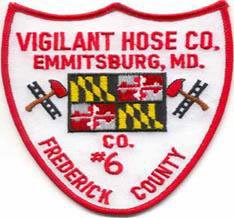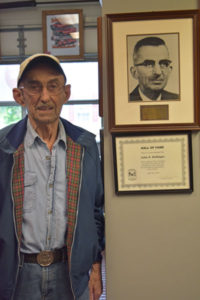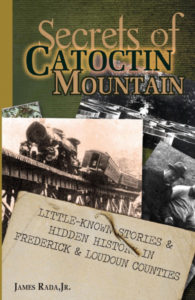

Members of both the Emmitsburg Volunteer Ambulance Company (EVAC) and the Vigilant Hose Company (VHC) have begun to discuss how their respective emergency services roles might be improved by merging personnel, resources and facilities.
This initiative is early in its consideration and will require research, on-going discussions and coordination among all stakeholders including the public, area businesses and institutions as well as local and county public policy officials and regional emergency services agencies.
EVAC President Mary Lou Little and VHC President Frank Davis jointly stress that this is an open and positive step that both organizations have long discussed. The community and surrounding area are the driving force to continue to work to improve and enhance service.
Senior administrative and operational leaders of both groups have recently been discussing possible ways to potentially combine personnel and resources to better meet growing service demands while also developing strategies ultimately determined to be in the best interests of those served.
Members of both organizations met together on Sunday evening, May 21, 2017, at the EVAC Station 26 to begin a process for positive outcomes. And, such interactions will continue. Community input is encouraged and will be used in designing a comprehensive approach and structure to move forward. Frequent updates will be issued so all interested can be kept apprised of developments.
Questions can be made through contact with Spokesperson Tim Clarke at 301-748-4161 or at HN181@AOL.com

 On Sunday, May 7, 2017—despite the chilly temperatures, windy conditions, and occasional rain—approximately 1,800 people were in attendance to witness the third annual crowning of the statue of the Blessed Virgin Mary at the National Shrine Grotto of Our Lady of Lourdes in Emmitsburg.
On Sunday, May 7, 2017—despite the chilly temperatures, windy conditions, and occasional rain—approximately 1,800 people were in attendance to witness the third annual crowning of the statue of the Blessed Virgin Mary at the National Shrine Grotto of Our Lady of Lourdes in Emmitsburg.

 It’s been a while since Terry Miller visited his hometown, but Thurmont is never far from his thoughts. He will be in town at 2:00 p.m. on Saturday, June 3, 2017, to sign copies of his book The Mountain Beyond and to take a walk down memory lane, at the Thurmont Visitors Center on Water Street.
It’s been a while since Terry Miller visited his hometown, but Thurmont is never far from his thoughts. He will be in town at 2:00 p.m. on Saturday, June 3, 2017, to sign copies of his book The Mountain Beyond and to take a walk down memory lane, at the Thurmont Visitors Center on Water Street.
 The view out of Rachel Mohler’s kitchen window is so picturesque that it should be a painting—in fact, it is a painting. Or, should we say, it is many paintings. Rachel has painted that ever-changing view nearly a hundred times since her resolution to complete a painting-a-day started on January 1, 2017.
The view out of Rachel Mohler’s kitchen window is so picturesque that it should be a painting—in fact, it is a painting. Or, should we say, it is many paintings. Rachel has painted that ever-changing view nearly a hundred times since her resolution to complete a painting-a-day started on January 1, 2017.






 Hitching posts date from very early days of iron-making to the early 1900s, before the automobile really took off.
Hitching posts date from very early days of iron-making to the early 1900s, before the automobile really took off. “I bought these glass pictures at an antique mall. They are framed in wood. The back label reads: Sungott Art Studios, New York. How old are they? Are they worth anything?”
“I bought these glass pictures at an antique mall. They are framed in wood. The back label reads: Sungott Art Studios, New York. How old are they? Are they worth anything?” “I inherited this vase. What can you tell me about it?”
“I inherited this vase. What can you tell me about it?” One of the questions I asked the administrative members of the Emmitsburg Ambulance Company was, “Why do you volunteer?”
One of the questions I asked the administrative members of the Emmitsburg Ambulance Company was, “Why do you volunteer?”


 Catoctin Mountain rose from a primordial lake to heights taller than Mount Everest. As time wore it away, many of its secrets were lost with its dwindling peaks. In the era of man, though, its history has been better preserved, although it still holds onto its secrets.
Catoctin Mountain rose from a primordial lake to heights taller than Mount Everest. As time wore it away, many of its secrets were lost with its dwindling peaks. In the era of man, though, its history has been better preserved, although it still holds onto its secrets.